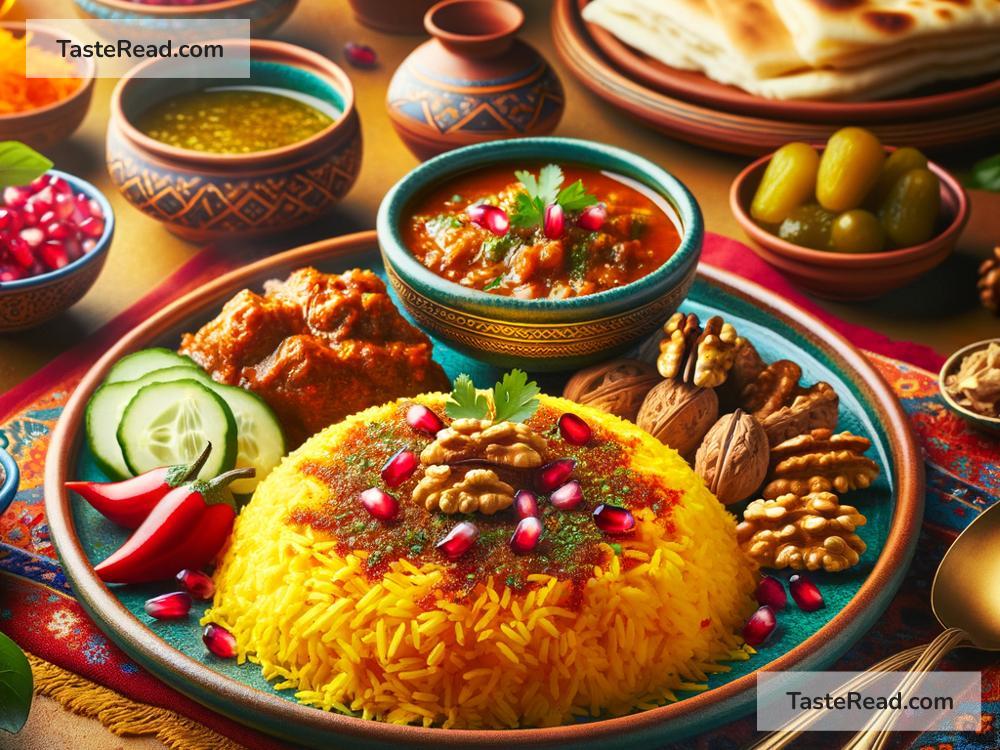Indulging in Traditional Persian Saffron Rice and Stews
Persian cuisine is renowned worldwide for its rich flavors, colorful dishes, and centuries-old traditions. At the heart of this culinary treasure is saffron rice and stews, a staple in every Iranian home. They are not just meals; they are a cultural experience that bring families together and offer a taste of Persia’s heritage. Simple yet bursting with flavor, these dishes tell a story of craftsmanship and love. Let’s dive into the delicious world of Persian saffron rice and stews and learn why they are so special.
The Magic of Persian Saffron Rice
Rice, known as “polow” in Persian, plays a major role in Iranian cooking. But it’s not just rice—there’s an art to preparing it. Persian saffron rice, or “chelow,” is no ordinary side dish. Fluffy, aromatic, and tinged with golden threads of saffron, it’s the centerpiece of a meal that elevates any accompanying dish.
Saffron is often called the “golden spice” because it’s expensive and delicate. It comes from the tiny stigmas of the saffron crocus flower and grows in only a few countries. Some of the world’s best saffron is produced in Iran, making it an essential ingredient in Persian cooking.
When preparing saffron rice, Iranians focus on two important steps: achieving perfect texture and maximizing aroma. First, the rice is soaked, rinsed, and carefully steamed to ensure each grain is cooked evenly and remains separate—not mushy. Then comes the saffron, which is dissolved in warm water and gently poured over the rice to infuse it with vibrant color and a fragrant smell. The rice isn’t complete without “tahdig,” a crispy golden crust formed at the bottom of the pot while cooking. Tahdig is a prized portion of the meal, often fought over at family dinners!
Persian Stews: Hearty and Flavorful
While saffron rice is the star, Persian stews, called “khoresh,” are its perfect match. These slow-cooked stews are hearty, flavorful, and full of spices, making them the ultimate comfort food. They come in many varieties, often featuring meat like lamb, beef, or chicken mixed with vegetables, herbs, and spices.
One of the most beloved stews is Khoresh-e Ghormeh Sabzi, which combines fresh herbs (parsley, cilantro, and green onions), kidney beans, and tender beef or lamb. Lime gives it a tangy kick, while dried fenugreek adds a unique aroma. This dish is a classic in almost every Iranian household.
Another favorite is Khoresh-e Fesenjan, a sweet-and-sour stew made with ground walnuts, pomegranate molasses, and chicken or duck. Its deep brown color and rich taste make it a standout dish, especially for special occasions.
Then there’s Khoresh-e Bademjan, an eggplant stew flavored with tomatoes, saffron, and beef or lamb. The eggplant soaks up all the juices, resulting in a dish that’s soft, savory, and full of flavor.
Each stew is carefully cooked over low heat, allowing the ingredients to blend perfectly and create complex flavors. When paired with saffron rice, the result is an irresistible combination that satisfies the soul.
More Than Just Food: Persian Hospitality
In Persian culture, food is more than sustenance—it’s a way of showing love and hospitality. Dining is often a shared experience, and meals are considered moments of bonding and celebration with family and friends. A dish like saffron rice with stews is created with effort and passion, and sharing it with others is seen as a gesture of care.
Whether it’s a casual lunch or a big family gathering, Iranian hosts take pride in presenting a table full of vibrant dishes. Often, meals are served with sides like fresh herbs, yogurt, pickles, and flatbread. These little extras add even more flavor and texture to the feast. Persians believe that eating together strengthens relationships and creates lasting memories.
Cooking Persian Dishes at Home
If you want to cook Persian saffron rice and stews at home, it might seem intimidating at first, but it doesn’t have to be. While it takes time and practice, with patience, anyone can learn the techniques. Saffron rice, for example, requires attention to detail—soak the rice properly, steam it gently, and don’t rush the tahdig.
For stews, the key is to let them simmer slowly so all the flavors blend together. Use fresh herbs and high-quality ingredients to bring out the best taste. You can find Persian recipes online or in cookbooks that simplify the process. Start with classics like Ghormeh Sabzi or Fesenjan, and enjoy experimenting little by little.
You don’t need to live in Iran to experience Persian cuisine. Even cooking one dish can offer a peek into Iranian culture and traditions.
Why Persian Cuisine Matters
Persian saffron rice and stews are not just delicious—they are part of a rich history that goes back centuries. Food is an important part of Persian identity, connecting people to their roots and traditions. Its flavors tell a story of the land, its ingredients, and the hands of the cook who lovingly prepared it.
If you’ve never tried Persian cooking, you’re in for a treat. Whether you visit a Persian restaurant or cook a meal yourself, indulging in saffron rice and stews is an unforgettable experience. It’s more than food—it’s a journey to the heart of Persia. So gather your ingredients, invite loved ones, and enjoy the simple pleasure of sharing this beautiful cuisine.
Happy eating, or as Persians say, “Nush-e jan!” (Bon appétit!).


